Learn how to oven-roast a turkey breast the easiest way, with crispy skin and juicy, tender meat. With these easy, step-by-step photo instructions, anyone can bake turkey breasts perfectly. Don't make an easy thing hard.
🦃Ingredients
Turkey breast—bone-in breast
Butter or Oil
Seasoning—usually kosher salt but other seasoning or herbs to taste
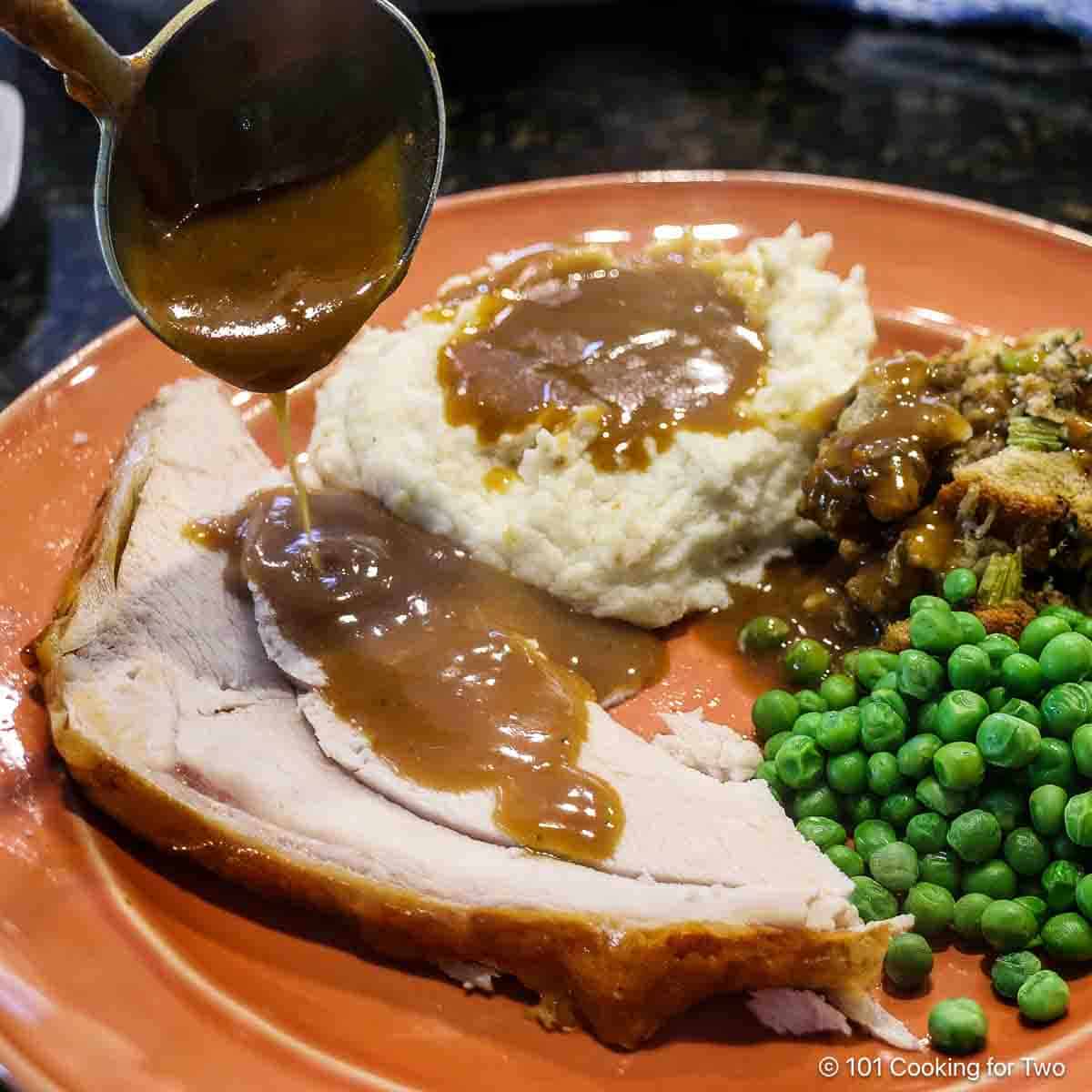
Jump To (scroll for more)
- 🦃Ingredients
- 👨🍳How to Cook Turkey Breast in the Oven—Step-by-Step Photo Instructions
- ⏰How long to cook a turkey breast
- 🌡️The best oven temperature for cooking turkey breast is 350°
- 🌡️The best turkey temperature is 165°
- 😊Tips for the best results
- 🧂Seasoning
- ❓How much turkey to buy per person?
- 🛒Shopping
- ❄️How to thaw a turkey breast?
- 🧂Should you brine and how to brine a turkey breast?
- 🥣How to make turkey gravy
- 🍴Serving and related recipes
- ❄️What to do with leftovers
- ❓FAQs
- ⚕️Food safety
- 📖The Recipe Card with Step-by-Step Instructions

Featured Comment from Norma :
⭐⭐⭐⭐⭐"This is the best, most straightforward instruction I have seen.
Thank you."
My method, developed over decades of cooking turkey breasts, is simple enough for beginners to roast a turkey breast perfectly every time using a bone-in turkey breast; however, a boneless turkey breast may also be used. Plus, learn to make an easy homemade gravy for a perfect Thanksgiving dinner without the hassle of whole turkey leftovers.
The two keys are flattening the rib section to stabilize the breast in the oven—there is no need for special equipment or difficult repositioning. Second, pick the correct oven temperature for crisp skin and juicy turkey.
👨🍳How to Cook Turkey Breast in the Oven—Step-by-Step Photo Instructions
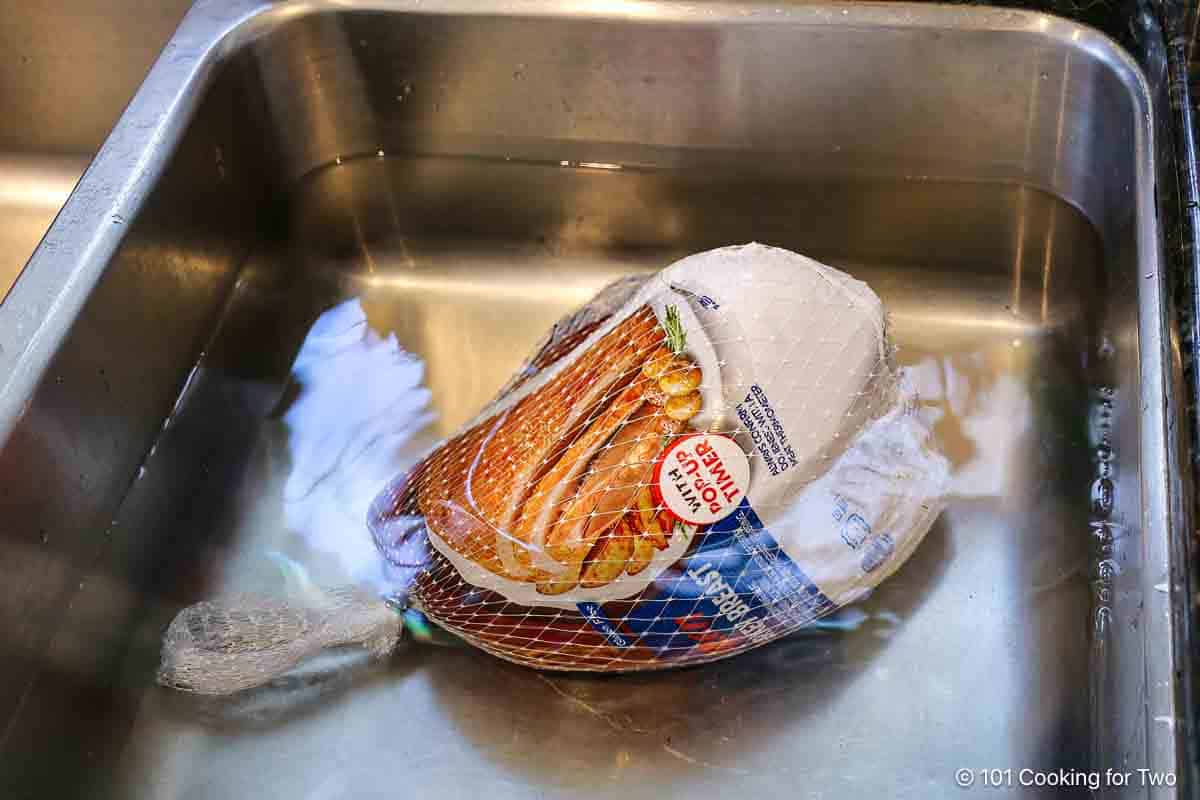
1. Fully thaw the turkey breast.
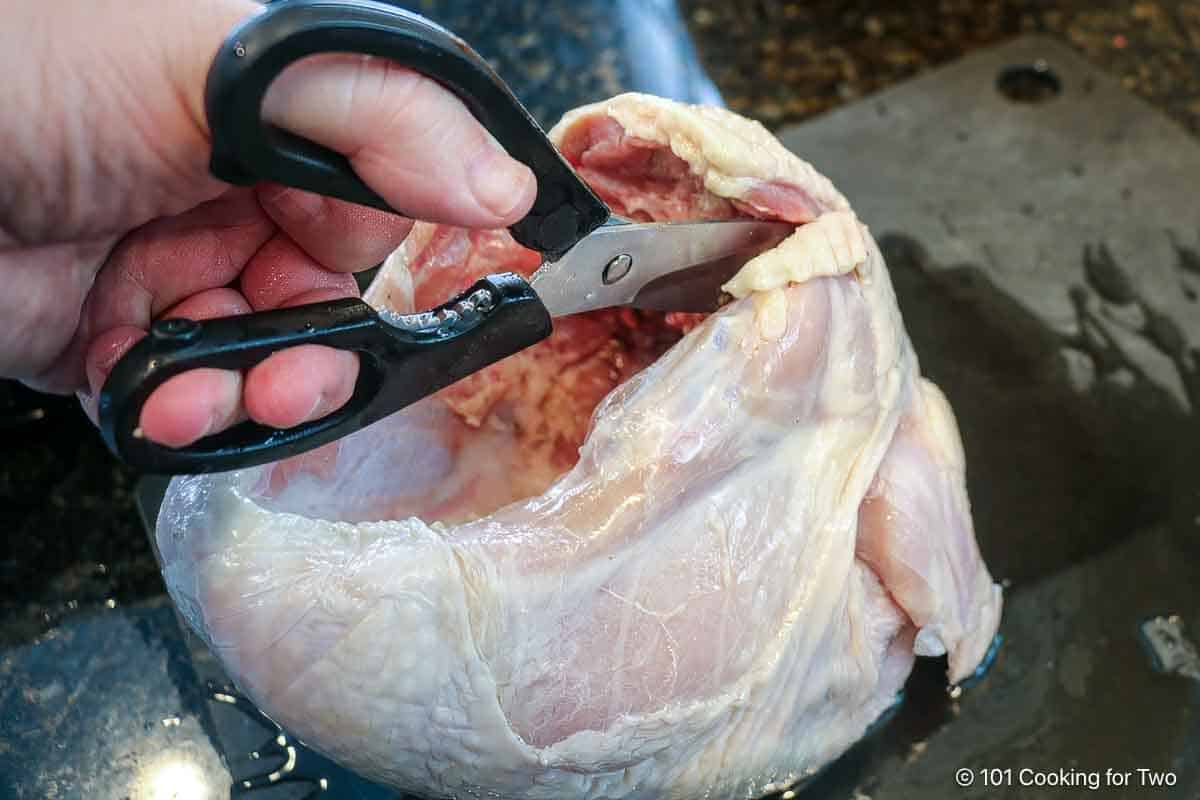
2. Cut out the backbone if present and trim any extra skin.
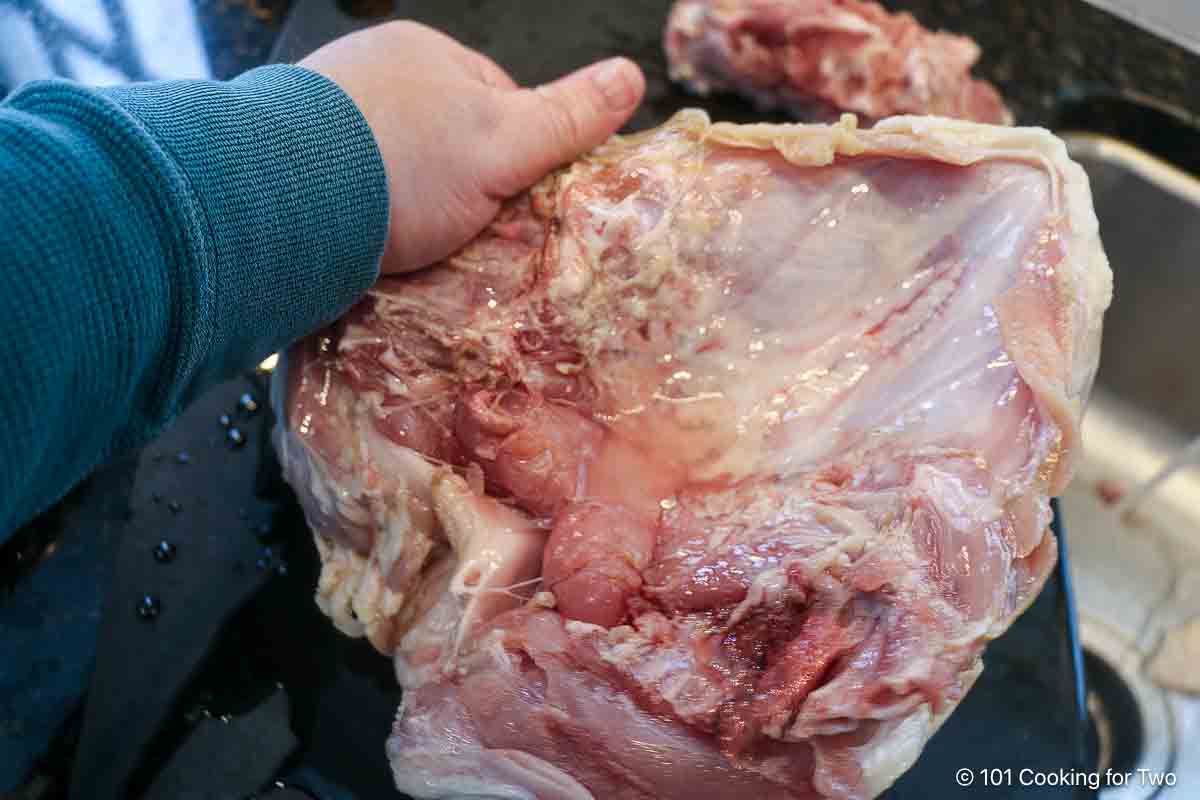
3. Break back the rib sections to set the breast flat.
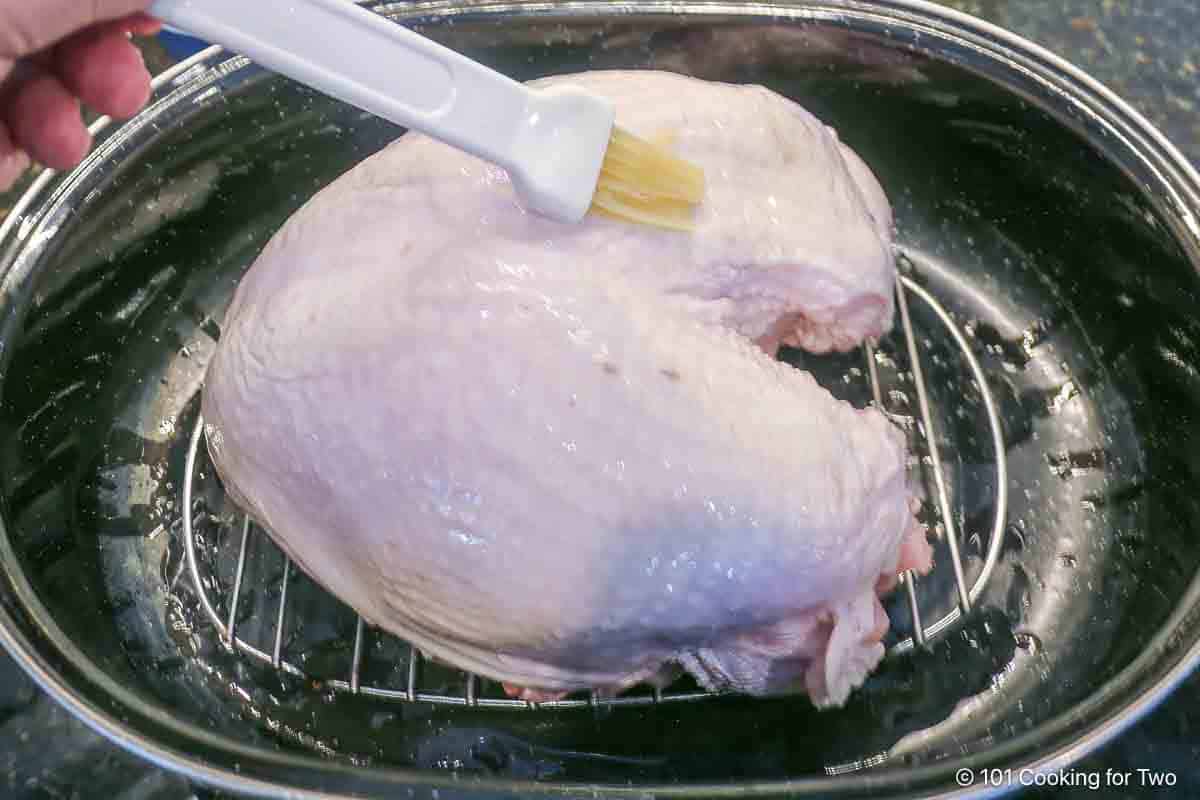
4. Season and bush with oil or melted butter. Add a sprinkle of salt or another seasoning or herbs.
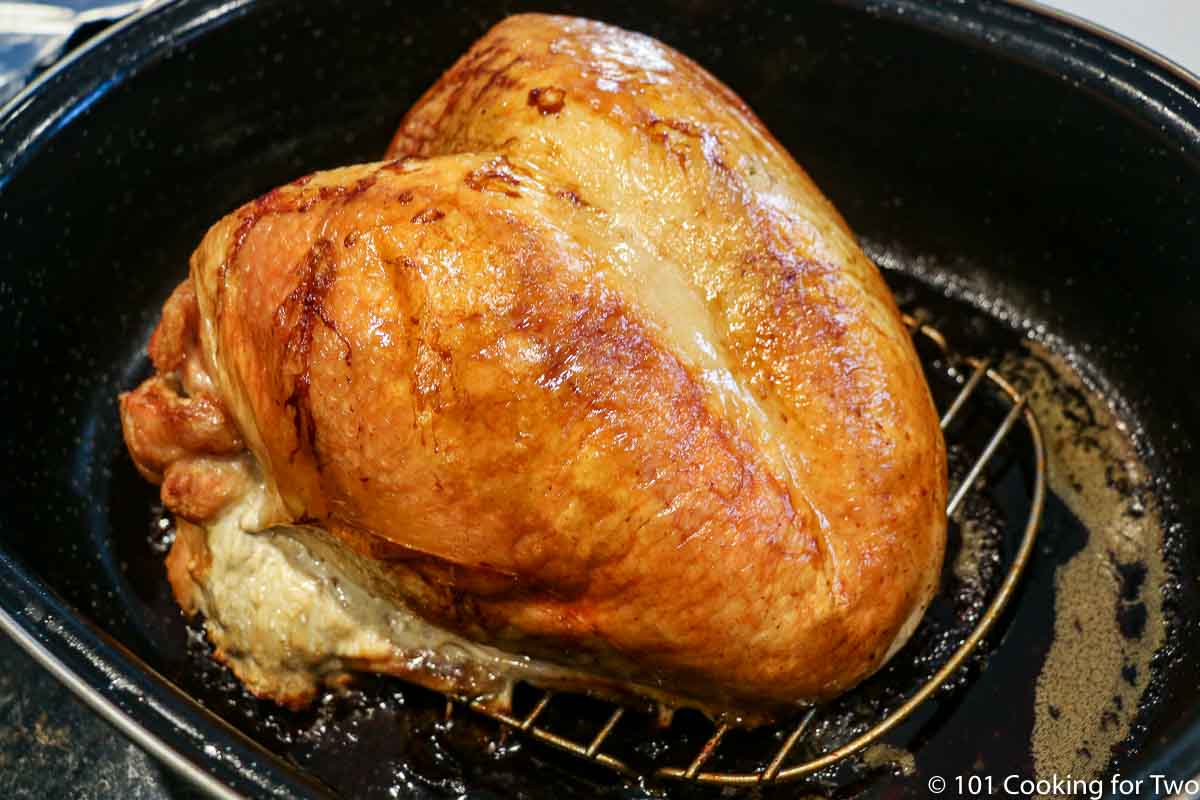
5. Roast at 350° until an internal temperature of 165° in the thickest part.
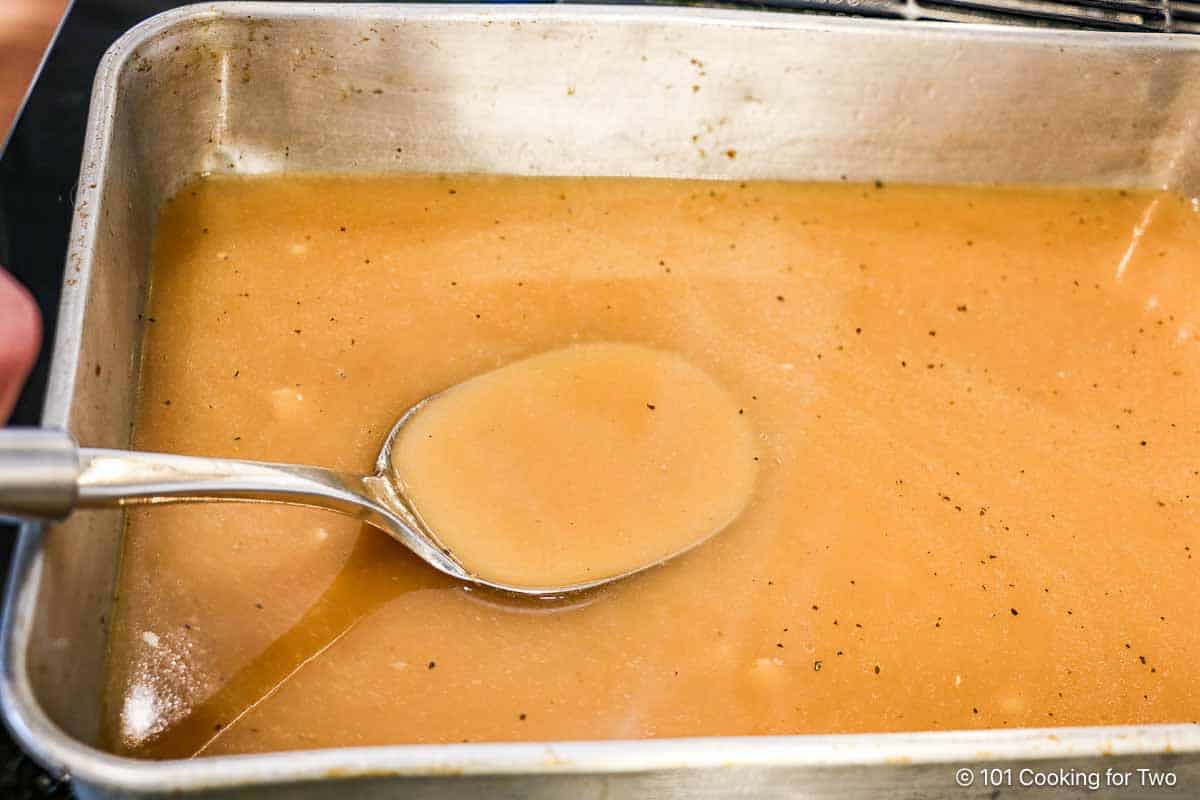
6. Tent turkey breast while you make gravy with the easy instructions.
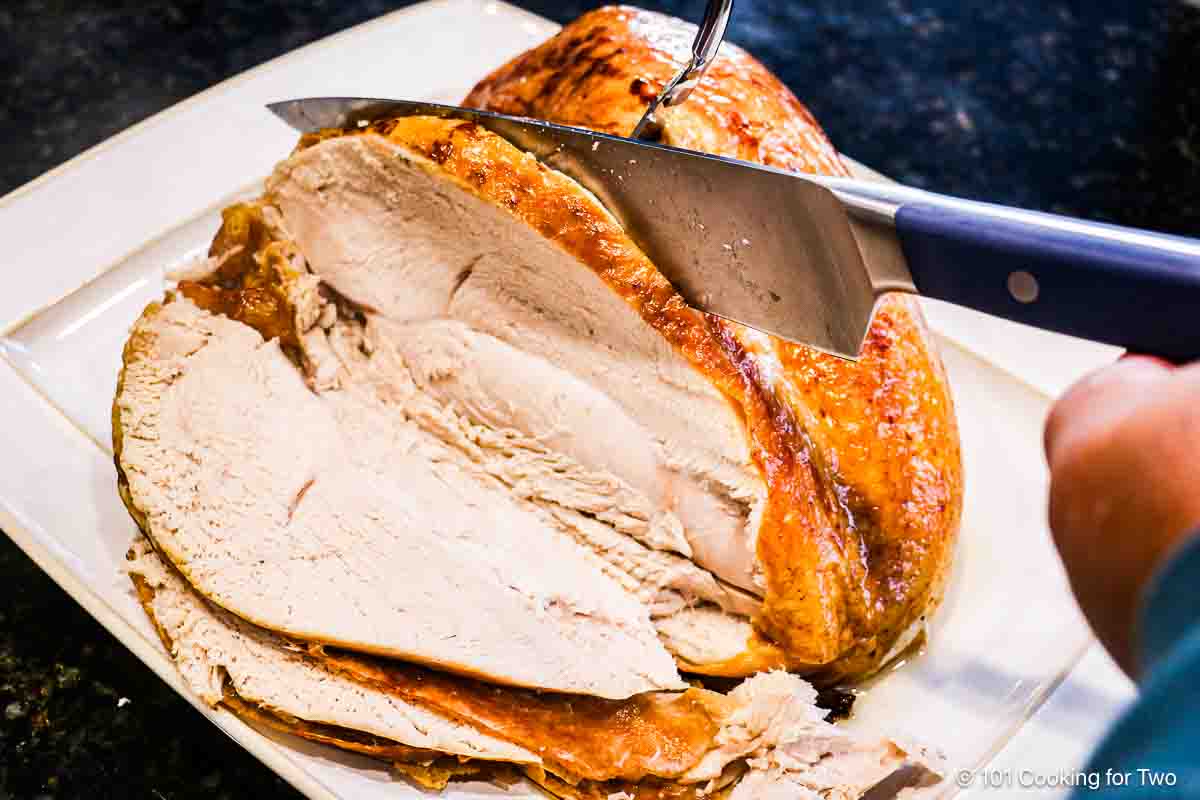
7. Slice the turkey breast and serve hot with gravy.
For more details, keep reading. See the Recipe Card below for complete instructions and to print.
⏰How long to cook a turkey breast
The cooking time for turkey breast is 16-20 minutes per pound in a 350° oven. A fully cooked 7-pound breast will take about 2 hours.
Cooking time depends on the thickness of the meat. Larger turkey breasts are at the lower end of the "pre-pound" range, while smaller breasts are at the longer end.
Cooking time in a 350° oven (estimated for planning only)
5 to 6 pound turkey breast will take 1 hour 30 minutes to 1 hour 45 minutes.
7 to 8 pound turkey breast will take about 2 to 2 hours and 15 minutes.
9 to 10 pound turkey breast will take about 2 hours 15 minutes to 2 hours 30 minutes.
REMEMBER TO COOK TO A FINAL TEMPERATURE OF 165° AND NOT BY TIME ALONE. Residual cooking may raise the temperature a few degrees after removal from the oven. And don't forget to let the breast rest after cooking for at least 10 minutes before cutting.
🌡️The best oven temperature for cooking turkey breast is 350°
The best oven temperature to cook a turkey breast is 350°. An oven temp of 325° can be used, but it will take longer, and the skin will not be as crisp. 375° is too high—you will cook the skin rapidly and need to tent it with aluminum foil near the end of cooking to prevent over-browning.
You may also use an alternative oven, like a countertop turkey roaster, freeing your oven for other dishes.
Should I use convection? You are cooking to a final internal temperature, so you can use convection, but it is unnecessary and may cause the skin to brown too much. If using convection, use 325°, and watch for excessive skin browning.
🌡️The best turkey temperature is 165°
The best internal temperature for turkey breast is 165° in the thickest part to be safe and fully cooked. That will give you a safe, moist, and tender turkey. Check with an instant-read thermometer.
Cooking past 165° will dry the turkey, but stopping short is not safe. Some recommend stopping at 160° and assuming the breast will reach 165° during the rest. It probably will, but I prefer to know I'm serving safe food. For more turkey safety points, see the USDA Food Safety page.
😊Tips for the best results
Some packages include the neck and a bag of gravy liquid. You could have used them to make broth for gravy, but that gets you in the "spending all day in the kitchen" zone. Also, a "gravy package" is occasionally present. Please make your own with my simple instructions—fresh is much better.
The breast needs to be in the middle of the oven for the best baking. So, the rack should be below the center of the oven.
Optional—Rotate the pan 180° halfway through cooking—baste with oil or butter if you wish but not needed. Rotating will help accommodate any oven hot spots.
Tent lightly near the end of cooking if the skin is browning too much.
After removal from the oven, tent lightly with aluminum foil for 15-20 minutes before carving. This allows the fluid to reabsorb into the meat cells, making for moister and more tender meat—the perfect time to make gravy.
🧂Seasoning
Season with just a sprinkle of Kosher salt and butter is all I need. Using oil instead of butter on the skin will give it a crispier texture, but butter is traditional.
You may use other dry or fresh herbs like sage, thyme, or rosemary. Other things like garlic or dry rub may be used. Herb butter is frequently placed between the skin and the meat.
Save this recipe!
❓How much turkey to buy per person?
I recommend ½ pound to 1 ¼ pound per person—a wide range, and both are correct. The number of servings is not the same as how much to buy. Many people eat more than one serving, and most want leftovers.
🛒Shopping
Like most recipes, the success of cooking a turkey breast depends on obtaining the best final temperature. You must be able to monitor the end point of cooking accurately and avoid overcooking the skin.
Here are some suggestions I like, but you can find many more good products that will work at your local big-box store. All links below are affiliate links, meaning I make a small profit from your purchases. This commission does not affect your price. We are a participant in the Amazon Services LLC Associates Program. As an Amazon associate, I earn from qualifying purchases.
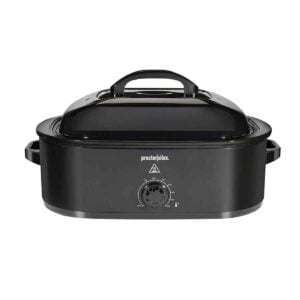
Proctor Silex Turkey Roaster Oven
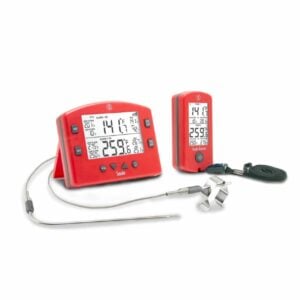
Smoke™ by Thermoworks™
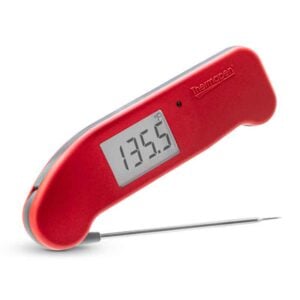
Thermapen™ One from Thermoworks™
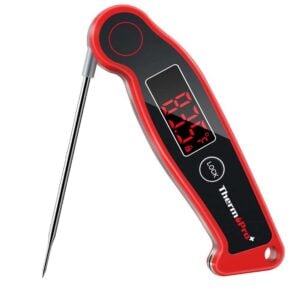
ThermoPro TP19 Instant Read Thermometer
❄️How to thaw a turkey breast?
Never thaw turkey or any other meat at room temperature. It is not safe. The preferred method is to thaw in the refrigerator in the original package. Place the unopened breast on a tray in the fridge for 1½ to 2 days or until thawed. I usually do three days. If you have a breast over 8 pounds, it may take longer.
Quicker water method to thaw a turkey breast
Place the unopened breast in cold tap water for 3 to 5 hours. Change water every 30 minutes to keep the turkey in the safety zone of less than 40°F.
🧂Should you brine and how to brine a turkey breast?
Almost for sure, no. But, if you are sure you have an uninjected and not previously brined turkey breast, brining it is a good thing. You should never brine an injected turkey breast.
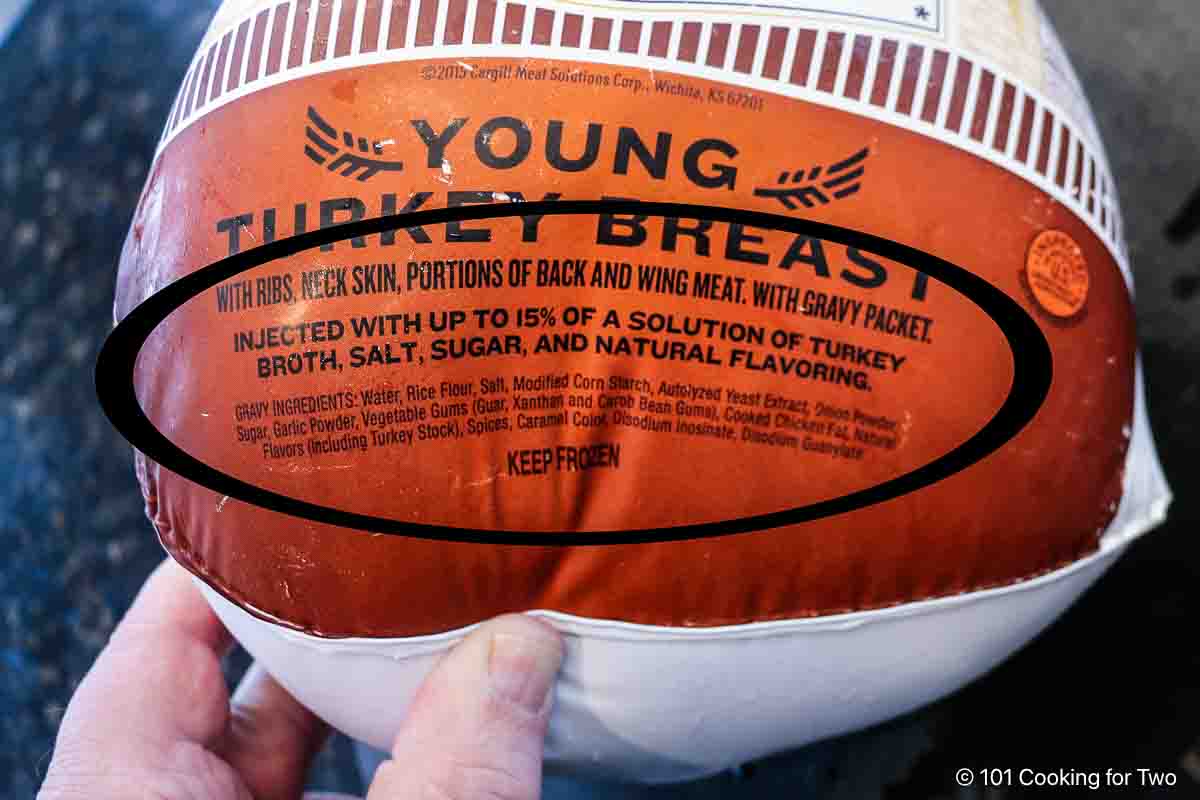
How to brine a turkey breast if indicated?
If you are sure your turkey has not been injected or brined, you can add a simple brine of 1 gallon of water, 1 cup of salt, and ½ cup of sugar for 12 to 24 hours. See How to Brine a Turkey for a complete guide and more details.
🥣How to make turkey gravy
Of course, you want gravy, but there are few pan drippings, so a traditional roux method does not work. In this recipe, I suggest a slurry method and combining pan drippings with chicken or turkey broth to make the gravy. See the details in the recipe. For more information about making gravy, see How To Make Gravy at Home.
🍴Serving and related recipes
In addition to the mandatory mashed potatoes and peas at our table, we serve Sausage Dressing, Sweet Potato Casserole, Green Bean Casserole, Broccoli Slaw, and Easy Dinner Rolls. Cranberry sauce and other side dishes are typical, depending on your traditions.
For other turkey recipes, see Easy Turkey Tenderloin and Grilled Turkey Breast.
❄️What to do with leftovers
Cooked turkey can be refrigerated for four days in an airtight container. It can also be frozen for about four months. Flour-based gravy can be stored the same way.
We always make extra gravy for leftovers. Cut up some turkey and reheat in the gravy (it may need a touch of water). Serve over leftover mashed potatoes, sausage dressing, or just by itself.
Also, we love Leftover Turkey Tetrazzini. Or make a pot pie, Double Crust Chicken Pot Pie.
Easy Turkey Tetrazzini
Turkey Tetrazzini is the perfect leftover Thanksgiving turkey recipe. It features tender turkey, creamy sauce, pasta, vegetables, and a crispy Parmesan topping. You may want to cook extra turkey this year for this casserole.
❓FAQs
No, it is not safe. To be safe, the stuffing would need to reach 165 °, and the meat would be overcooked and dry.
No, turkey breast should be oven-roasted and uncovered. To brown nicely, the skin must be exposed to a 350° oven for about 1 ¾ to 2 hours. That is the cooking time for a small 5 to 7 lbs breast.
If your breast is bigger, the meat will not be done when the skin is nicely brown. You may need to tent lightly with foil when the skin is brown—an easy fix.
No, never rely on popup timers, which are inaccurate. Use a meat or instant-read thermometer to be safe and get the best results.
No. Some breast meat may still be slightly pink when fully cooked, but it is safe to eat if the temperature reaches 165° with a reliable thermometer.
Some meat may be pinker in older turkeys with more myoglobin, which can cause a soft pink color. Also, smoked turkey is frequently pink. There are other causes, but this is not science class—see the USDA for more discussion.
The most important thing is to not overcook the breast. So, watch the internal temperature and don't go above 165°. The second measure is if the breast is not injected or previously brined, then brining will prevent most dryness.
⚕️Food safety
Raw poultry should be considered contaminated and handled with care. Wash your hands carefully before and after touching raw chicken.
We do NOT wash raw poultry routinely due to water splatter. See Chicken… To Rinse or Not To Rinse? for more information.
You must be cooked to an internal temperature of 165°. See the USDA safety guidelines for more information. You need to check this with an instant-read thermometer.
Most recipes contain estimated times for cooking (including this recipe). They are provided for planning purposes. You can not cook safely by time—you must use a thermometer.

📖The Recipe Card with Step-by-Step Instructions
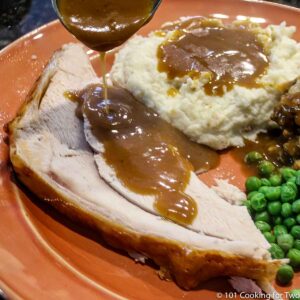
Oven Roasted Turkey Breast—The Easy Way
Video Slideshow
Ingredients
- 5-8 pounds turkey breast - thawed
- 1 tablespoon oil or butter
- salt to taste - or seasoning of your choice
- ½ cup flour
- 4 cups broth - turkey or chicken
- salt to taste
Step-by-Step Instructions
- Fully thaw the turkey breast before proceeding. Preheat the oven to 350° with a rack set at the lower third of the oven. Use conventional baking, not convection.
- Remove any bags of things. Cut out the backbone if present—a heavy knife or kitchen shears are needed. If a popup timer is present, pay no attention but do not remove it.
- Break back the rib sections to have a flat bottom to set on a rack. The weak point is about an inch from the breastbone on each side. Use a knife if needed. You can skip this if you are using a V-rack.
- Cut back any extra skin, like the neck area—pat dry with paper towels.
- Place a rack in an appropriate-sized pan. If you don't have a rack, skip it. Use a full roasting pan for a large 7+ pound breast or a cake pan for a smaller breast. Spray the rack and pan with PAM. Place the breast on the rack and spread the rib sections to stabilize it.
- Give it a bush with vegetable oil or melted butter. You can give it a sprinkle of kosher salt at this point.
- Place in the center of the oven. Leave it alone for 1 hour, then rotate 180° and brush with oil or butter. Check the color at about 1 ½ hours to 2 hours; if the skin becomes too brown, tent lightly with aluminum foil while finishing roasting to prevent further browning.
- Roast until an internal temperature of 165° in the thickest part. This will be between 16-20 minutes per pound usually. Variability is caused by the breast's thickness, starting internal temperature, and your oven.
- Remove the breast from the oven and tent with foil. The internal temperature will rise about 3° to 5° when tented. Let the breast sit for 10-15 minutes before carving.
Optional Gravy
- While the turkey rests, whisk 2 cups of turkey or chicken broth with ½ cup of flour. Add 2 cups more broth to the roasting pan and any drippings present. Place over medium-high heat and bring to a boil.
- Decrease the heat to medium and slowly add the broth-flour mixture while continuously whisking. Add most of it and add more later if needed. Add salt and pepper to taste. Once thickened, cook an additional few minutes.
- Slice the turkey and serve hot with gravy.
Recipe Notes
Pro Tips:
- For safety, never thaw at room temperature. Place the unopened turkey breast on a tray in the refrigerator for 1½ to 2 days or until thawed.
- OPTIONAL: To thaw the unopened breast faster, place it in cold tap water for 3 to 5 hours. Change the water every 30 minutes to keep the turkey cold, below 40° for safety.
- You can brine if you are sure your turkey has not been injected or previously brined.
- Use a 350° oven. Lower the rack to have the breast in the center of the oven.
- Cooked turkey and the gravy are good refrigerated for 4 days and may be frozen for 4 months.
- Nutrition is calculated on ½ pound servings and ⅓ cup of gravy.
Your Own Private Notes
To adjust the recipe size:
You can adjust the number of servings above; however, only the amount in the ingredient list is adjusted, not the instructions.
Nutrition Estimate (may vary)
Editor's Note: First Published on March 25, 2018. Updated with expanded options, refreshed photos, and a table of contents to help navigation.
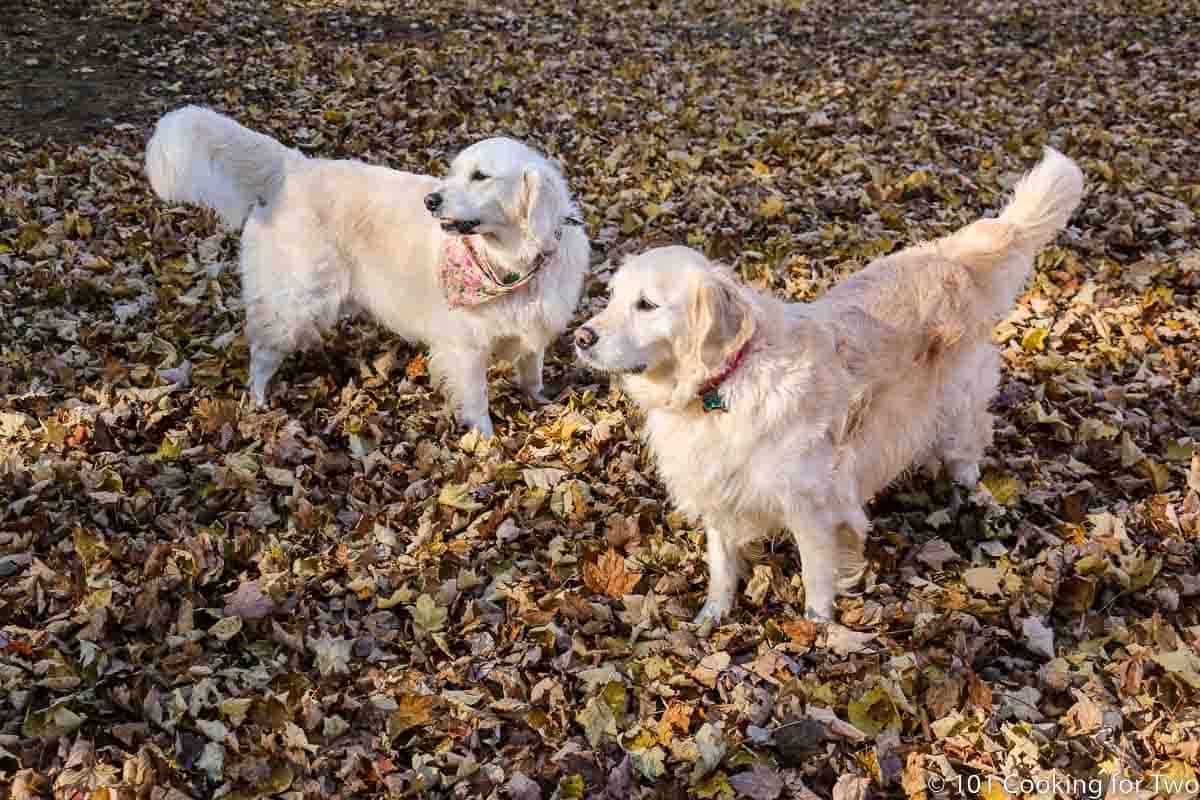


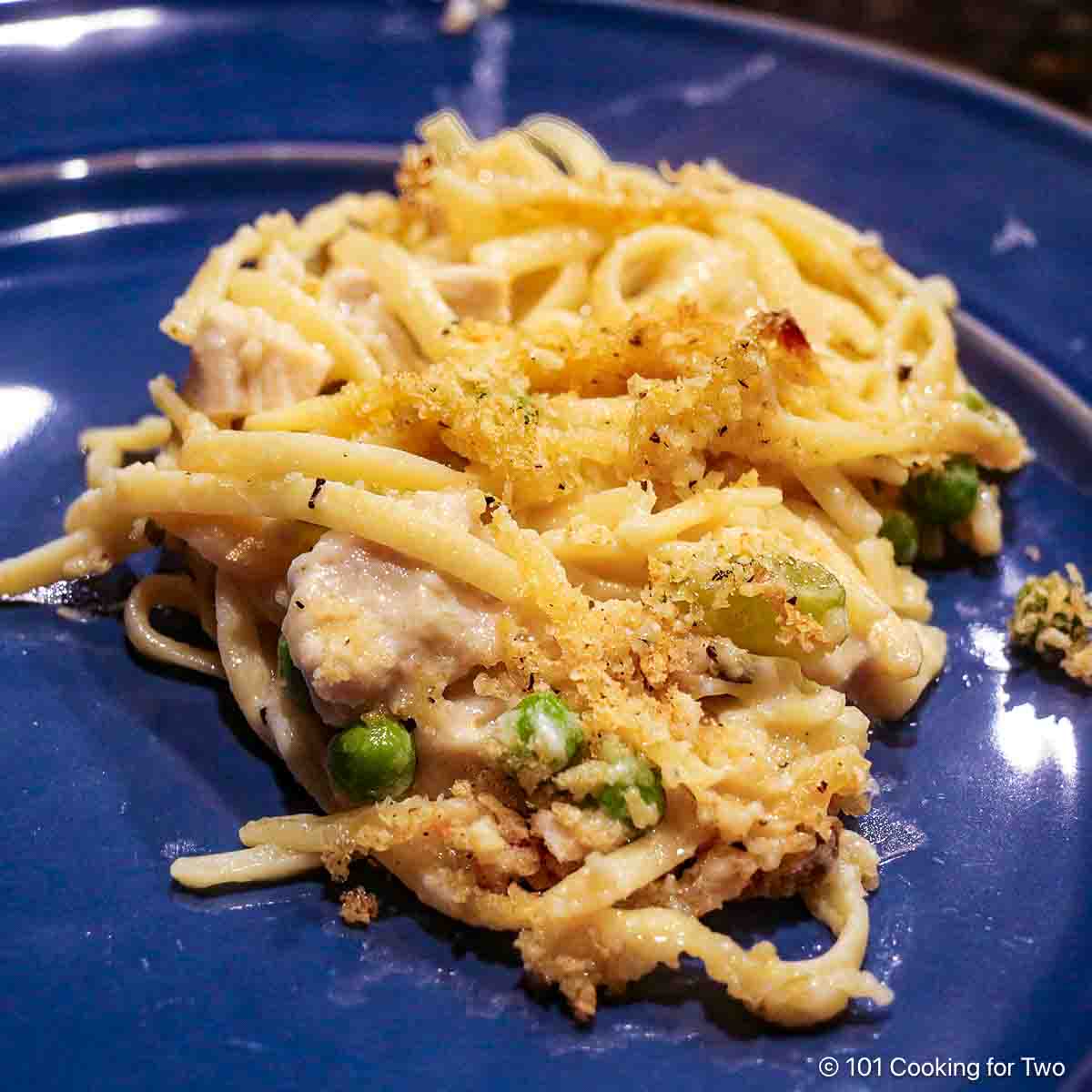











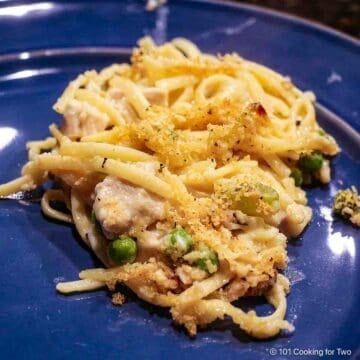
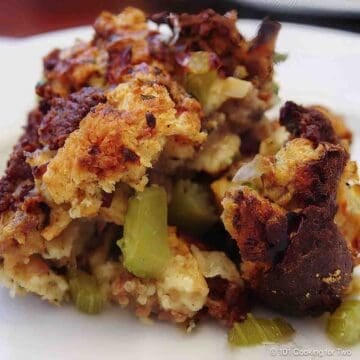
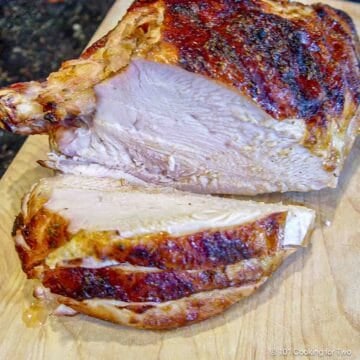
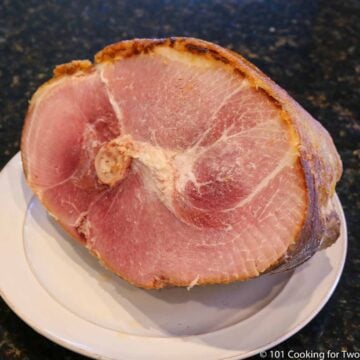
Mama K says
This was my first time to cook a turkey breast (without the rest of the bird), and I was actually just trying to figure out which side to place up in the pan when I stumbled upon this recipe. I had never even considered splitting anything apart, but I decided to give it a go. I am certainly glad that I did!! This was super easy, faster than the original packaging predicted, and the finished product was tender & delicious. I'm bookmarking this one for next time I need to be reminded of exactly "what did I do last time that worked out so well? 🤔" Thank you!!
David says
I didn't want to rate this recipe, just put a comment that I had a 7lb turkey breast and it took 3.5 hours to get to 160 (in some places). it was 170 in other places and 155 in others. This seems to always happen to me when taking meat temps. Do you think my thermometer is broken? I made sure it was deep but not touching bone for readings. I can tell it seems very tough already. I'm afraid it will be too dry but I was just following the temp instructions.
Dan Mikesell AKA DrDan says
Hi David,
Welcome to the blog.
About your issues. Something is wrong with the thermometer or the oven. Or the breast is not fully thawed. My suspicion is the thermometer. You can test it by boiling water on your stovetop and check the temp which will be 212°.
Since the meat is dry, it usually means overcooked. The oven is less likely to be far that far off, although prolonged cooking at a lower temp would dry out the meat.
Hope that helps.. my money is on the thermometer.
Dan
PS. forgot to add to fully preheat the oven before starting.
Dana Stieferman says
I need to do a whole turkey for a gathering. All I find on your site are for turkey breasts - can you get us a whole-turkey recipe for next year? I would prefer a smoked recipe, would like to try a grilled turkey, but a roasted recipe will do.
Thanks a bunch!@ Happy Thanksgiving.
Dan Mikesell AKA DrDan says
Hi Dana
Welcome to the blog.
Email with attached PDF sent.
Dan
Jim Coggs says
Hi Dr. Dan
Can you put stuffing under the breast?
Maybe cook a little longer?
Dan Mikesell AKA DrDan says
Hi Jim,
Welcome to the blog and good question.
It is all about safety which means temperature. So yes, as long as you get the stuffing to 165 in all areas. But you do not want to overcook the turkey. So, remove the breast when it is 165 and you can leave the dress in to reach the required 165 while the breast rests to absorb the fluid back into the cells.
I see two issues, first, the pan is tied up with the dressing so my gravy is either skipped or another method is needed. And the second is the dressing will be cooked under the weight of the breast, leading a compressed texture I probably wouldn't prefer.
Hope that helps.
Dan
Anita says
I found this recipe last year and forgot to save it and Thank Goodness I came across it again this year. It's just me and my husband right now and even if we do get invited over to family I always like to make turkey that weekend and have our own dressing and gravy. Yes, it's Thanksgiving Day right now and the breast is going in the oven in about 30 minutes. This time I will try and cut the backbone properly. And thank you for the Penzley's tip. I have family that is in a city right now where they have a location. I am going to ask them to pick it up for me. Thanks Dr. Dan!